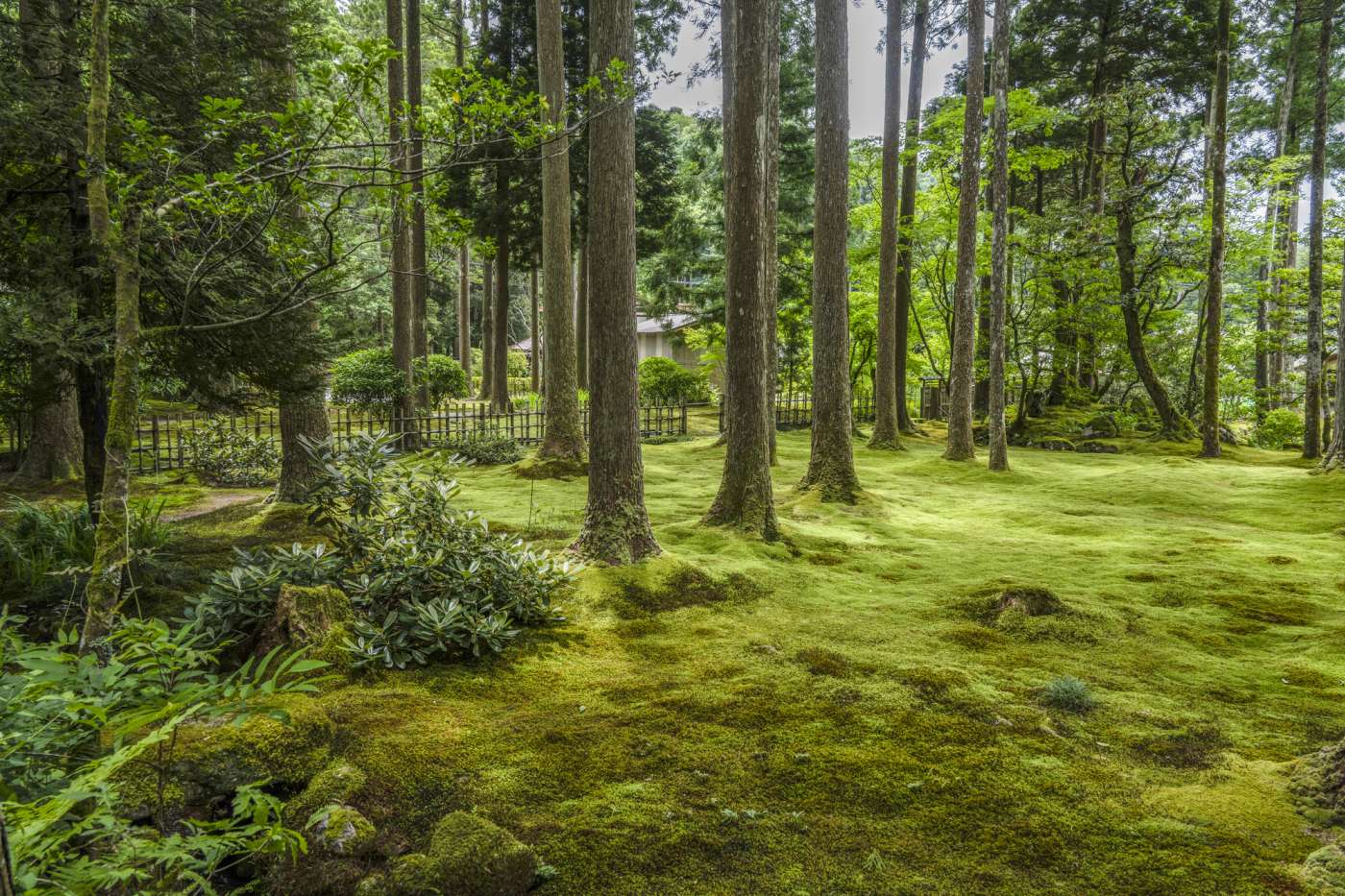
Japanese moss gardens are a stunning example of the grace and simplicity of Japanese garden design. Whether found in their natural settings or meticulously crafted by skilled gardeners, these gardens are true works of art that invite us to slow down and appreciate the beauty of the natural world. For travelers seeking a unique and magical experience, an exploration of these lush landscapes is a must.
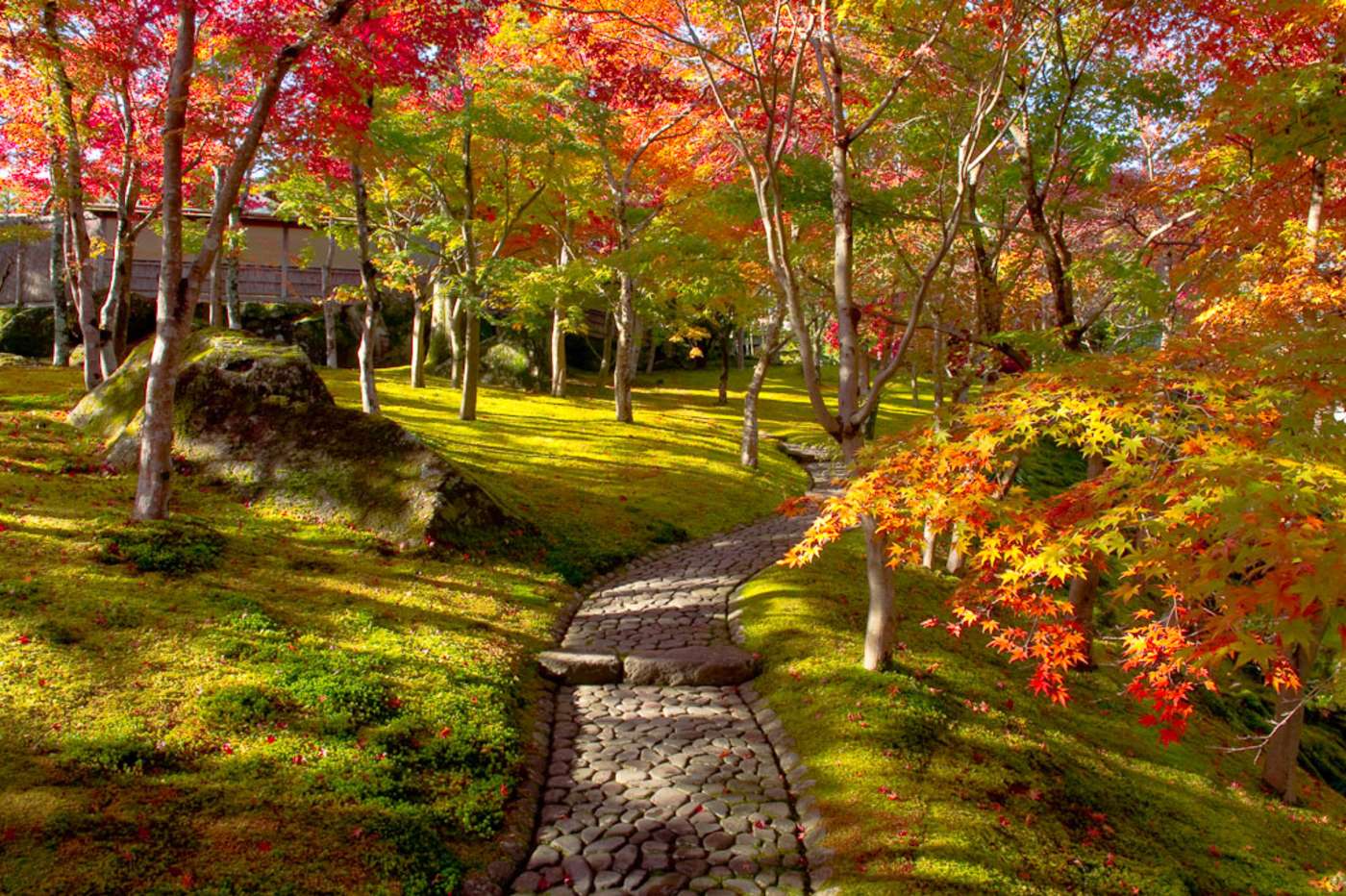
The moss garden at Hakone Museum of Art in fall.
Photo credit: Hakone Museum of Art
The history and significance of moss gardens in Japan
Japanese people have long appreciated the natural beauty of moss and in classical Japanese poetry moss often represents the deep passage of time. In fact, the Japanese national anthem takes its lyrics from a poem of the Heian period (794–1185) which also celebrates moss-covered rocks. However, it wasn’t until the 14th century that moss gained popularity as a deliberate element of garden design that perfectly represents the wabi-sabi aesthetic of simplicity and imperfection. It seems that moss first arrived naturally in Japanese gardens as an uninvited guest, but Zen monks and tea masters alike welcomed the gentle contemplative calm that it brought to their gardens.
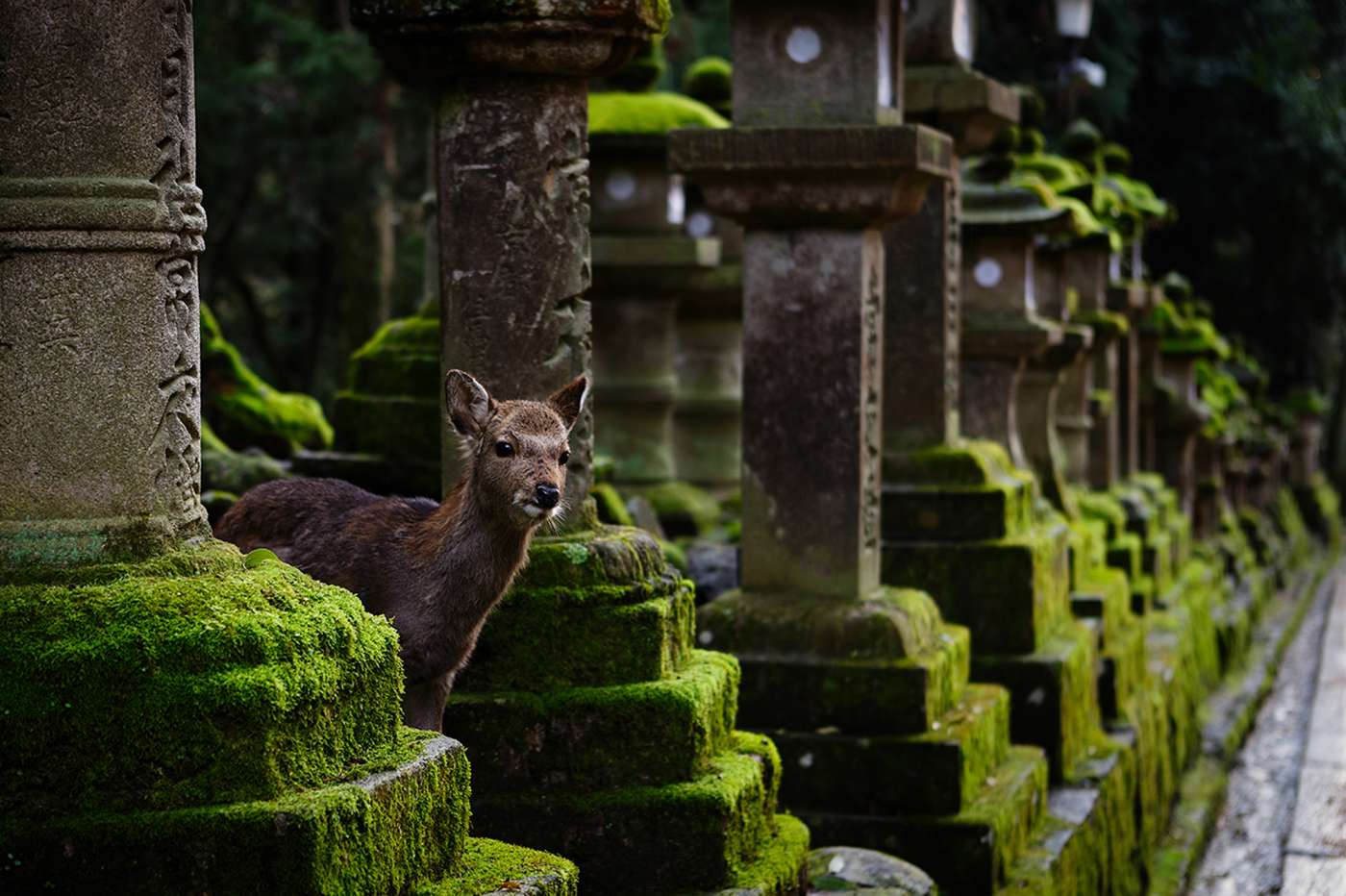
A world of vibrant shades and textures
Japan’s long rainy season and humid climate create a perfect environment for moss and there are believed to be over 1,800 varieties of moss that grow naturally here. Different varieties provide different textures: spiky, smooth or feathery, as well as subtle shades of emerald, apple and laurel green. And their colors change with the seasons too – brighter green in spring and early summer and darker greens in the cooler months.
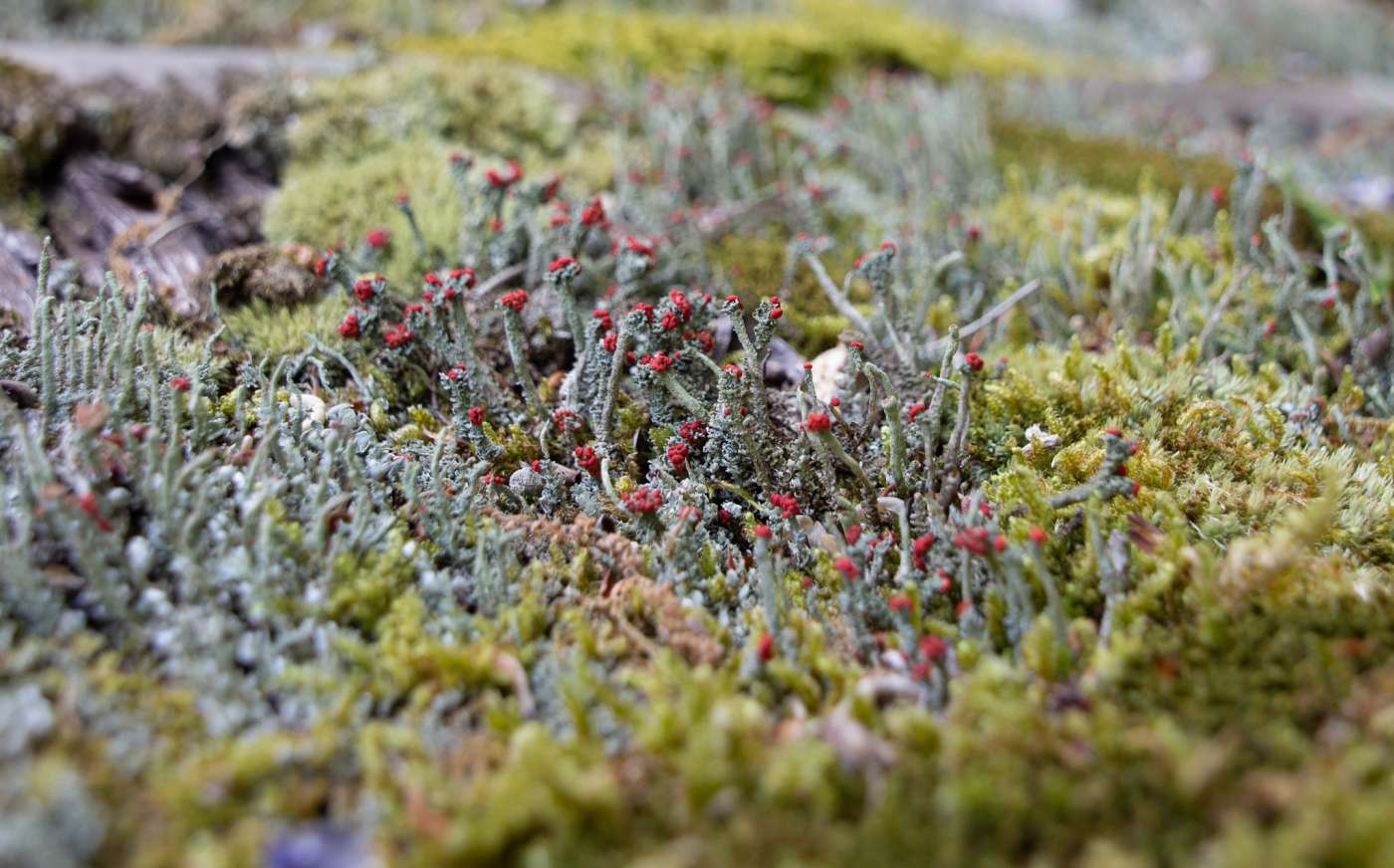
Take a closer look at the micro-world of moss and lichen flora.
Photo credit: Melanie Sweeney
In dry landscape gardens, moss is used to help create miniaturized landscapes as objects of contemplation: rocks represent mountains, raked gravel represents oceans, and moss represents forests. However, when moss is used throughout a garden, its soft, velvety texture and lush green color naturally creates a sense of deep and timeless peace and quietude.
One thing to keep in mind is that even though moss can be used in a garden, unlike grass, it’s surprisingly delicate. To help the moss prosper, remember not to step on or touch the moss so that it can continue to grow undisturbed.
Hiyo Koke no Sato: An enchanting destination for nature lovers
Deep in the mountains of Ishikawa Prefecture, the village of Hiyo has created a unique moss garden called Koke no Sato. Set in a cedar forest, lofty trees and high humidity provide shade and water for the garden’s 48 varieties of moss. Koke no Sato is a community project which opened in 2013 and is carefully maintained by local residents so that visitors can appreciate this unique environment where people and nature live in harmony.

Verdant layers of moss cover Hiyo Koke no Sato.
Photo credit: Melanie Sweeney
After paying a small entry fee, groups of up to seven visitors may explore by themselves, but larger numbers will require a guide since the garden is made up of private properties. A tour is recommended, as your guide can explain the history of the area and introduce the different varieties of moss. Note that visitors should bring one person who can speak Japanese. For inquiries about tours or the garden, please inquire through a Japanese speaker or a tour agency.

The path leading you through Hiyo Koke no Sato.
Photo credit: Melanie Sweeney
Chatsubomi Moss Park and Shojinzawa Springs: Hidden gems in nature
Chatsubomi Moss Park, located about 30 minutes away from Kusatsu Onsen in Gunma Prefecture, is set around a natural spring that formed after the eruption of Mt. Kusatsu-Shirane. The waters that flow through the spring are extremely acidic and create the perfect, harsh environment for the rare chatsubomi moss to thrive.
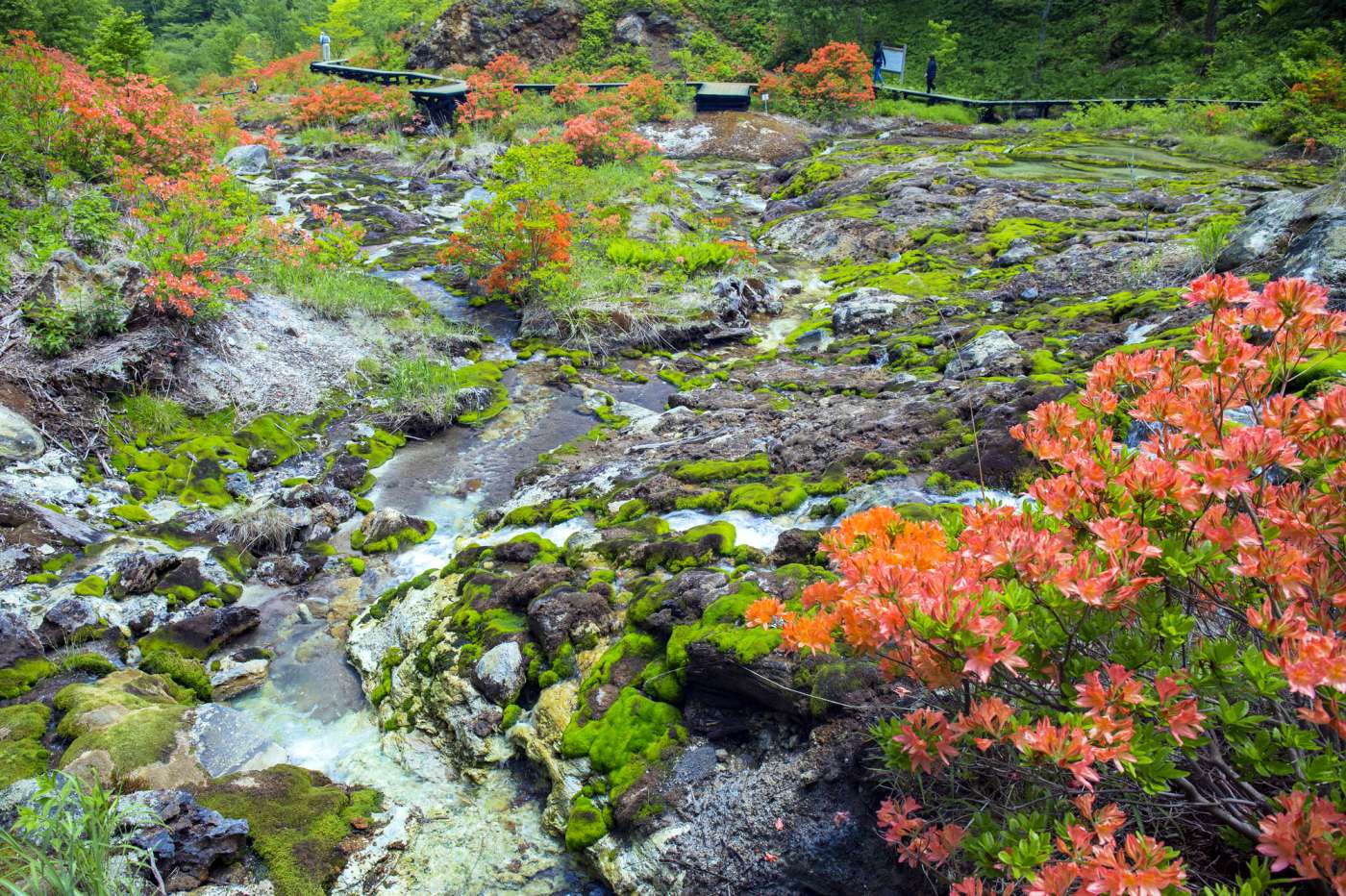
The chatsubomi moss creates an other-worldly atmosphere.
Another hidden gem is the Shojinzawa Springs, located on the hillside of Mt. Takahara in Tochigi Prefecture. Unlike the harsh conditions of Chatsubomi Moss Park, Shojinzawa Springs has crystal clear water that was even selected as one of the 100 most exquisite and well-conserved water sources in Japan. A rich carpet of moss grows on and between the rocks and, combined with the way the sunlight filters in through the trees, it almost feels as though time is standing still.

The constant temperature of the water keeps it from freezing over or running dry, even in winter.
Discover magical moss at the Hakone Museum of Art moss garden
The moss garden at Hakone Museum of Art is one of a series of gardens created and opened by Okada Mokichi, the museum’s founder in 1952. Hakone’s moist climate and the shade provided by 220 maple trees have allowed 130 varieties of moss to thrive here in luxuriant green splendor.

Winding stone paths allow you to walk through the garden without disturbing the gentle moss.
Photo credit: Hakone Museum of Art
Protected by a blanket of snow in winter, the moss garden emerges in vibrant shades of green in the spring and forms a brilliant contrast with the scarlet maple leaves in the autumn. The other gardens include a bamboo grove, a rock-walled path which is lined with bush clover and a dramatic landscaped rock garden.
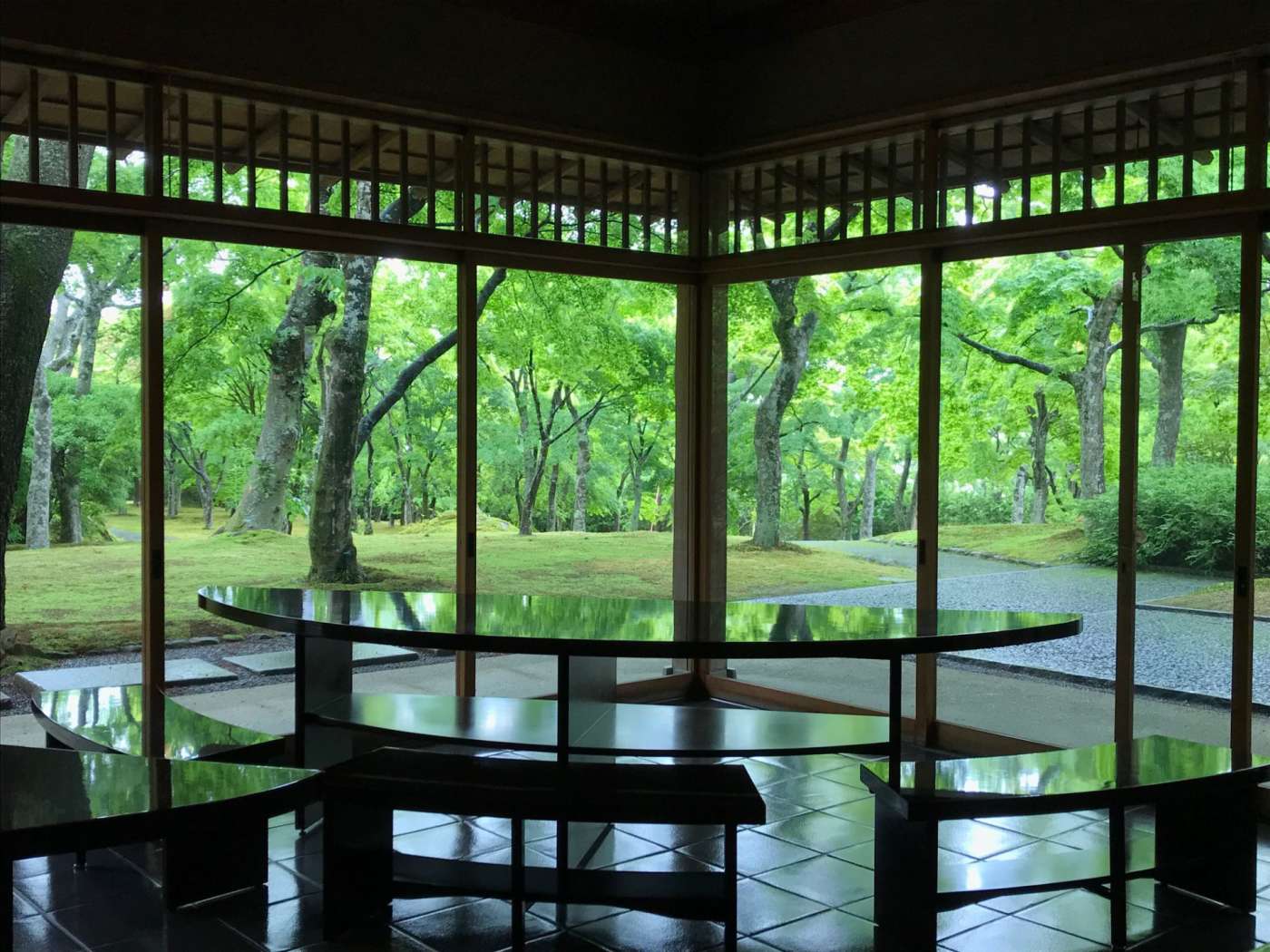
A view of the moss garden at Hakone Museum of Art from the Shinwatei Teahouse.
Photo credit: Hakone Museum of Art
Other ways to immerse yourself in tranquility on your journey
A visit to a moss garden is not the only way to experience tranquility when traveling in Japan. Why not take part in a meditation session at a Zen temple and free your mind for a moment from busy, everyday concerns? You may also like to take part in a traditional tea ceremony, a ritual practice that emphasizes mutual respect, harmony and simplicity. Or to relax your body as well as your mind, take a break at a hot spring resort or day spa. There you can soak your body in a natural hot spring bath and let the mineral waters wash your worries away.

Experience the bliss of an open-air hot spring bath.
-
About the author
Author: Michael Lambe
Profile: Michael is a British writer and translator based in Kobe who has been happily exploring Japan’s language and culture for over 25 years.





















































